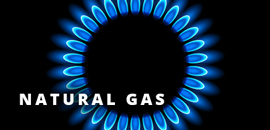PROGRESS REPORT
With the Texas Department of Transportation (TxDOT) occupying over 1,650 buildings located at over 360 sites throughout Texas, there are approximately 20,000 utility bills, paid monthly, to support buildings, highway lighting, sign lighting, pump stations and traffic signals. Due to this magnitude, it is apparent that the largest energy usage is electrical and should be the focus of energy saving measures. TxDOT operates in both the regulated and unregulated utility locations within the state. Approximately 60 percent of all electrical energy is in the unregulated environment. Currently, TxDOT is in a 12-month extension period of the original three-year negotiated contract with an unregulated provider to provide “green” energy. TxDOT plans to issue a request for proposals (RFP) to negotiate a long-term contract with an unregulated provider to provide “green” energy.
During fiscal 2020, TxDOT had a 3.5 percent reduction in electrical usage and an 8.3 percent reduction in natural gas usage. Below are some energy savings implementations during the past year:
- Completed construction projects in Corpus Christi, Saginaw, Lufkin and Dallas, as well as the new Stassney Campus in Austin that included exclusive LED lighting and newer energy efficient HVAC systems.
- Several smaller statewide projects replaced high bay shop and warehouse lighting, as well as exterior site lighting with LED fixtures.
- Continued use of network capable thermostats in our facilities at the Austin Headquarters campuses has proven reliable. These are capable of remote access to be able to setback the temperature during unoccupied periods; limit the range that someone can adjust them; and remotely monitor the systems for proper operation. Installation of two of the thermostats was completed at our Camp Hubbard campus. The thermostats have performed well. As a result, this is the new standard in which we use for future new thermostats.
- Completed the installation of LED fixtures and automation control system (Lutron Vive) in our Austin Greer Building. All renovations now include an upgrade to LED lighting fixtures.
- Instituted a Preventive Maintenance (PM) program to PM the HVAC units at Austin Headquarters campuses to ensure operating optimum efficiency.
- Replace failed HVAC systems with higher efficiency systems.
GOALS
Not reported.
| Utility | Target Year | Benchmark Year | Percentage Goal |
|---|---|---|---|
| Water | FY2021 | FY2020 | 0.01 |
| Electricity | FY2021 | FY2020 | 0.01 |
| Transportation Fuels | FY2021 | FY2020 | 0.01 |
| Natural Gas | FY2021 | FY2020 | 0.01 |
STRATEGY FOR ACHIEVING GOALS
TxDOT facilities statewide are installing LED lighting at a 100 percent rate for all new construction and major renovations. The agency is also installing LED lighting as replacements to existing lighting when possible.
In the area of signals since the early 2000s, TxDOT has aggressively pursued the replacement of signal lighting with LED and today are almost at a 100 percent rate for all signals. In addition, conversion to LED lighting for highway illumination continues.
In Assessment Year (AY) 2023, construction projects in McKinney, La Marque, Hondo, Alpine, Rosenberg, Pecos, Waco, Woodville, Austin and Presidio will be completed to include exclusive LED lighting and newer energy efficient HVAC systems.
In AY 2023, multiple smaller projects are planned statewide to replace office, shop, parking and warehouse lighting with LED fixtures.
All new construction and major renovation projects comply with the latest edition of the American Society of Heating, Refrigerating and Air Conditioning Engineers (ASHRAE) standards.
TxDOT continues to evaluate alternative fuel strategies (CNG, propane, E85, hybrid/electric) to reduce gasoline use.
Propane trucks are now located in districts where access to fuel sources can maximize use. TxDOT is currently evaluating other locations that might be feasible for expanding propane use and integrating propane dispensing into more tightly into the Fleet Navigator (FNAV) fleet management system.
A CNG dump truck has also been acquired and will be rotated between districts to determine performance and needs
TxDOT continues to evaluate alternative fuel strategies (primarily hybrid/electric, propane and CNG) to reduce gasoline use. Propane trucks are now located in districts where access to fuel sources can maximize use. TxDOT continues to evaluate other locations that might be feasible for expanding propane use and integrating propane dispensing more tightly into the FNAV fleet management system.
TxDOT facilities statewide are installing LED lighting at a 100 percent rate for all new construction and major renovations. The agency is also installing LED lighting as replacements to existing lighting when possible.
In the area of signals since the early 2000s, TxDOT has aggressively pursued the replacement of signal lighting with LED; and today are almost at a 100 percent rate for all signals. In addition, conversion to LED lighting for highway illumination continues.
In AY 2023, construction projects in McKinney, La Marque, Hondo, Alpine, Rosenberg, Pecos, Waco, Woodville, Austin and Presidio will be completed to include exclusive LED lighting and newer energy efficient HVAC systems.
In AY 2023, multiple smaller projects are planned statewide to replace office, shop, parking and warehouse lighting with LED fixtures.
All new construction and major renovation projects comply with the latest edition of the ASHRAE standards.
TxDOT continues to evaluate alternative fuel strategies (CNG, propane, E85, hybrid/electric) to reduce gasoline use.
Propane trucks are now located in districts where access to fuel sources can maximize use. TxDOT is currently evaluating other locations that might be feasible for expanding propane use and integrating propane dispensing into more tightly into FNAV.
A CNG dump truck has also been acquired and will be rotated between districts to determine performance and needs
TxDOT continues to evaluate alternative fuel strategies (primarily hybrid/electric, propane and CNG) to reduce gasoline use. Propane trucks are now located in districts where access to fuel sources can maximize use. TxDOT continues to evaluate other locations that might be feasible for expanding propane use and integrating propane dispensing more tightly into the FNAV fleet management system.
TxDOT’s cross-functional alternative fuels project team continues planning for the long-range use of alternative fuels within the agency. Recent efforts include applying for state and federal grants to defray the costs of alternative fuel vehicles, which are typically more expensive than standard vehicles. TxDOT has received $2.2 million in alternative fuel grants from various sources since 2018:
- Environmental Protection Agency Diesel Emissions Reduction Act state allocation grant (2018): $427,214
- Environmental Protection Agency Diesel Emissions Reduction Act competitive grant (2018): $710,000
- Environmental Protection Agency Diesel Emissions Reduction Act state allocation grant (2019): $528,827
- Texas Commission on Environmental Quality/Texas Emissions Reduction program (2020): $498,084
Several grant opportunities are available for supplementing funding for alternative fuel vehicles in TxDOT’s fleet. SB 1731, which was passed by the 85th Texas Legislature, created a governmental alternative fuels grant program under the Texas Emissions Reduction Plan, and TxDOT has attended recent meetings held by the Texas Commission on Environmental Quality to learn more about how the program will be administered. Federal and other grant programs are also available. TxDOT is researching these programs and will apply for those that are a good match for the agency.
TxDOT is responsible for properly obtaining, managing, using and maintaining equipment to ensure appropriate use of tax dollars. TxDOT's equipment PM program was established to comply with these responsibilities. All districts and divisions that have or use equipment must follow the PM program.
The current objectives of the PM program are the efficient and effective use of equipment, labor, tools and facilities to achieve maximum serviceability and safety of the equipment fleet at the lowest overall cost to the agency.
TxDOT is conserving energy by maintaining vehicles in top operating condition to reduce fuel consumption.
TxDOT uses a variety of energy saving exercises to reduce energy consumption. TxDOT targets heating, ventilation and air conditioning systems, lighting systems, windows, roofs and water consuming plumbing devices. TxDOT purchases and installs the highest efficiency HVAC systems, while maintaining a cost-effective stance. TxDOT also uses a night setback schedule and unoccupied modes in the building automation system to alter the space temperature setpoint. Whenever the space is scheduled to be “unoccupied” TxDOT changes the setpoint of the space to a more aggressive energy saving setting. In addition to that setback, TxDOT also uses occupancy sensors in some of the spaces. These sensors can determine if the space is unoccupied and will act accordingly to reset the space temperature according to being occupied or unoccupied. TxDOT is now leveraging the newer “chill beam” type of HVAC system. This chill beam system reduces fan energy and produces a much quieter operation than a conventional system. TxDOT is now purchasing chillers that come equipped with variable frequency drives (VFD) on them. These VFDs allow the chiller to start up and run using minimal start up amperage. Chillers that are not equipped with VFDs usually consume four to five times their normal running loaded amperage to start up. Whenever possible, TxDOT installs LED lighting to reduce energy consumption and increase reliability. TxDOT also utilizes energy saving roofing systems. These reflective roofing systems are designed to offset heat gain and loss through the top levels of the facilities. TxDOT specifies the most efficient windows to offset heat gain and loss through these window panes. TxDOT has specified and installed low flow plumbing fixtures in newer break rooms and restrooms. Thesenew lowflow fixtures allow TxDOT to reduce the amount of water needed for normal building occupation.
IMPLEMENTATION SCHEDULE
TxDOT utilizes these energy saving measures mentioned previously any time new construction projects are being undertaken. Any time that TxDOT replaces or retrofits existing systems, these systems are evaluated and whenever possible also utilize the energy saving measures mentioned previously.
AGENCY FINANCE STRATEGY
Not reported.
EMPLOYEE AWARENESS PLAN
TxDOT’s energy savings plan is used to help shape the operational guidelines for the facilities. This plan is mentioned and referenced throughout the document.
TxDOT has a recycling team that puts out a monthly newsletter call Buy-Ways. This program encourages items such as:
- Being active in the Clean Air Plan (CAP)
- Turning lights out
- Recycling paper and cardboard
- Recycling aluminum cans
- Composting
- Using public transit or car pooling
- Using Energy Star® products
TxDOT’s CAP encourages and incentivizes employees to use alternate commuting options (carpool, bus, bike, walk or telecommute) to prevent vehicle emissions. This does have the co-benefit of reducing overall energy usage.
The team has also placed stickers on light switches to remind employees to turn the lights out when not in use.






